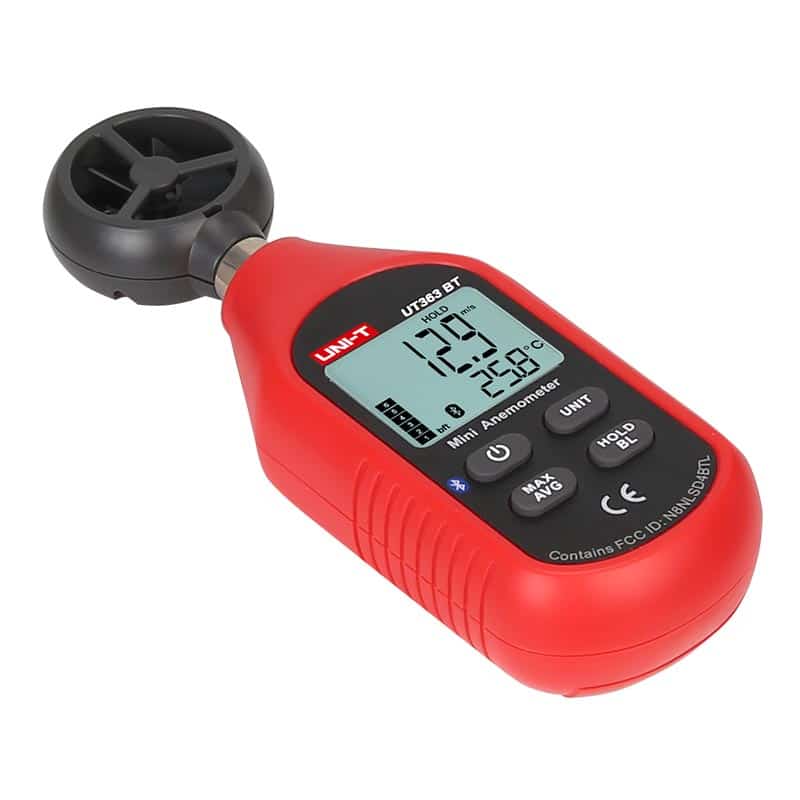The Duty of an Anemometer in Improving Safety for Outdoor Activities
Checking Out the Functions and Benefits of Anemometers for Weather Fanatics and Specialists
From cup anemometers to sonic anemometers, each type brings its one-of-a-kind set of advantages and applications, dropping light on various aspects of atmospheric problems. As we dive right into the features and advantages of anemometers, a deeper understanding emerges not only of dominating weather condition sensations yet also of the broader effects for industries like wind energy production and ecological research study.
Value of Anemometers in Weather Tracking
Anemometers play a vital duty in weather tracking by giving precise dimensions of wind speed, helping in projecting and understanding climate patterns. These tools, ranging from traditional cup anemometers to modern-day ultrasonic anemometers, are important for meteorologists, researchers, and weather condition fanatics alike.

Sorts Of Anemometers and Their Applications
The most usual kinds of anemometers consist of mug anemometers, vane anemometers, hot-wire anemometers, and ultrasonic anemometers. Cup anemometers consist of three or 4 cups mounted on straight arms that revolve with the wind, determining its rate. Vane anemometers, on the other hand, use a freely turning vane to align with the wind instructions, offering both wind speed and direction dimensions.
Cup anemometers are appropriate and durable for general climate monitoring, while vane anemometers are favored for directional measurements. Ultrasonic anemometers are non-intrusive and use high precision, often used in research study and specialized climate monitoring applications.
Advantages of Using Anemometers in Projecting
In meteorology, the usage of anemometers supplies vital advantages for boosting the precision of climate forecasting. Anemometers measure wind speed and instructions, giving vital information for predicting climate patterns. By including wind data into projecting designs, meteorologists can better comprehend the activity of weather systems, prepare for adjustments in weather, and problem extra specific projections.
Additionally, anemometers play an important function in examining potential weather risks. Checking wind rates aids forecasters predict extreme climate events such as hurricanes, tornadoes, and winter months tornados with better accuracy. This very early caution system makes it possible for authorities to issue prompt alerts and carry out essential safety and security actions, minimizing the threats to life and home.
Additionally, anemometers anchor assist in optimizing sustainable energy manufacturing. By analyzing wind patterns, meteorologists can identify appropriate locations for wind ranches and forecast power output, contributing to the efficient generation of wind power.

Anemometers in Wind Power Manufacturing
Provided the vital function anemometers play in providing accurate wind information for weather condition projecting and threat analysis, their relevance includes the world of wind power production. Anemometers are crucial instruments in the field of wind energy, where the dimension of wind rate and instructions is important for establishing the feasibility and effectiveness of wind turbine setups. By properly determining wind rates at varying heights, anemometers assist maximize the positioning and style of wind turbines to maximize energy result.
In wind farms, anemometers are strategically positioned to gather real-time wind information that is made use of to analyze the potential power production of a site. This data contributes in determining the economic stability of wind energy projects and in forecasting power generation to ensure grid security. Furthermore, anemometers help in keeping an eye on wind conditions to enhance wind turbine performance, prevent damages from high winds, and make sure the safety and security of personnel operating in the webpage vicinity of wind turbines.
Enhancing Climate Understanding With Anemometers

Anemometers play an essential role in boosting our understanding of microclimates. These localized climate condition can this contact form differ substantially from more comprehensive local projections, making it important to have exact information for details areas. anemometer. By purposefully placing anemometers in various places, scientists can gather thorough information on exactly how wind behaves in different surfaces, city environments, or bodies of water
Moreover, anemometers add to improving weather condition forecasting models by providing real-time information on wind behavior. This info is specifically valuable for predicting severe weather condition occasions, enhancing farming practices, and sustaining markets like aviation and maritime navigating. Generally, anemometers are very useful instruments that allow us to dive deeper right into the complexities of weather condition systems, eventually causing more exact predictions and better-informed decisions.
Conclusion
In verdict, anemometers play a crucial role in weather tracking and forecasting by determining wind speed and instructions. Anemometers likewise have applications in wind power production, more highlighting their relevance in both weather forecasting and sustainable energy sectors.
From mug anemometers to sonic anemometers, each kind brings its one-of-a-kind set of benefits and applications, dropping light on numerous facets of climatic conditions. These instruments, varying from typical mug anemometers to modern ultrasonic anemometers, are essential for meteorologists, scientists, and climate lovers alike. The most typical types of anemometers include cup anemometers, vane anemometers, hot-wire anemometers, and ultrasonic anemometers. Mug anemometers are durable and appropriate for basic climate tracking, while vane anemometers are preferred for directional dimensions. Anemometers are necessary instruments in the field of wind power, where the measurement of wind rate and direction is vital for figuring out the usefulness and performance of wind generator installments.